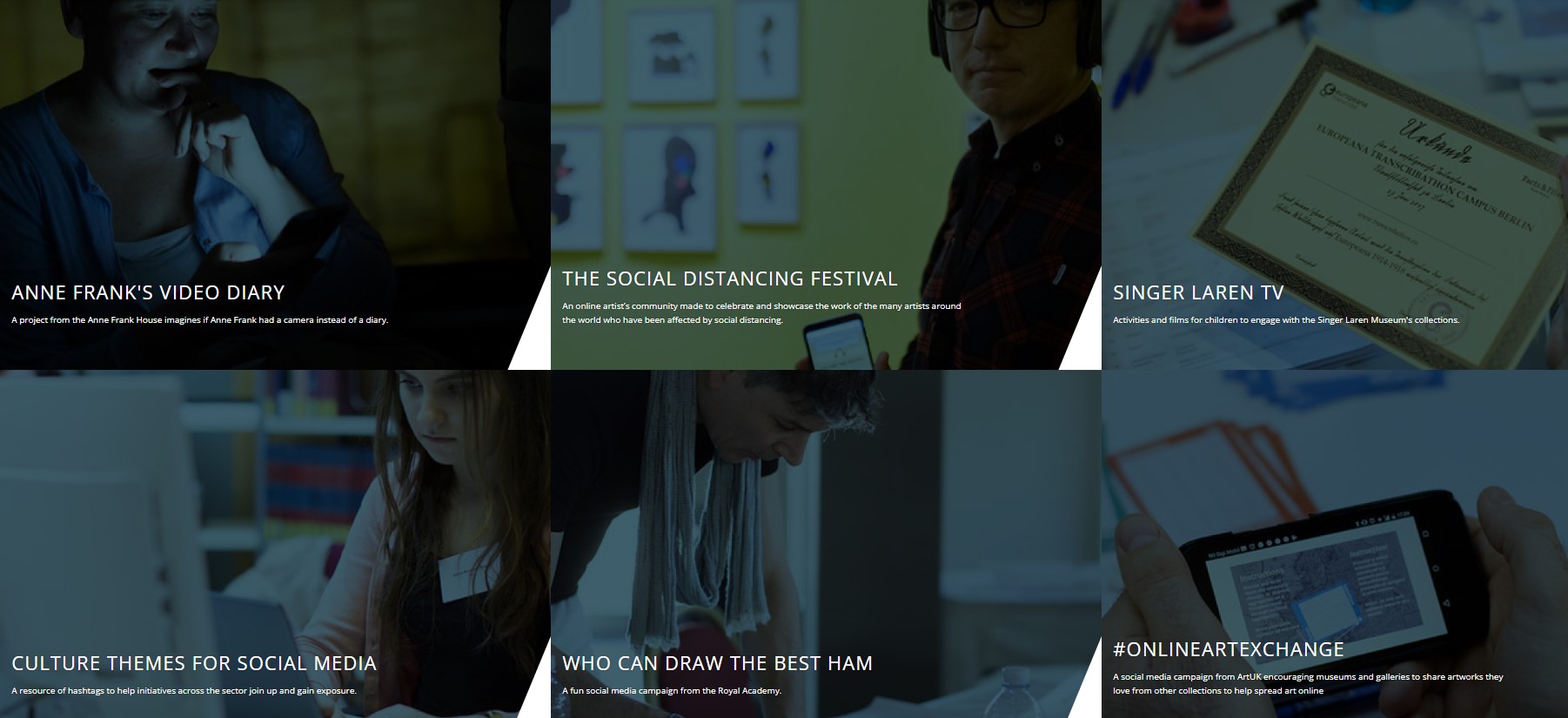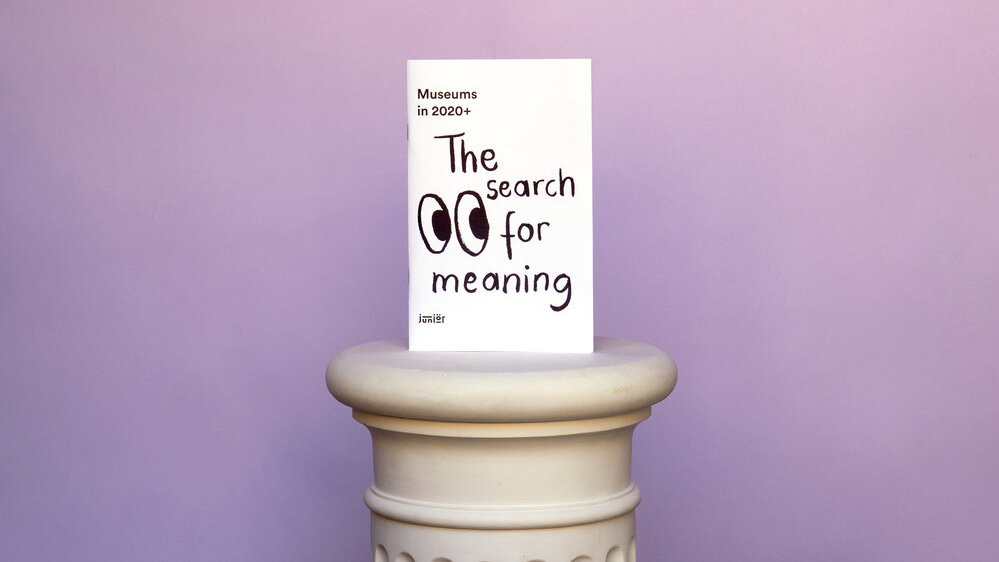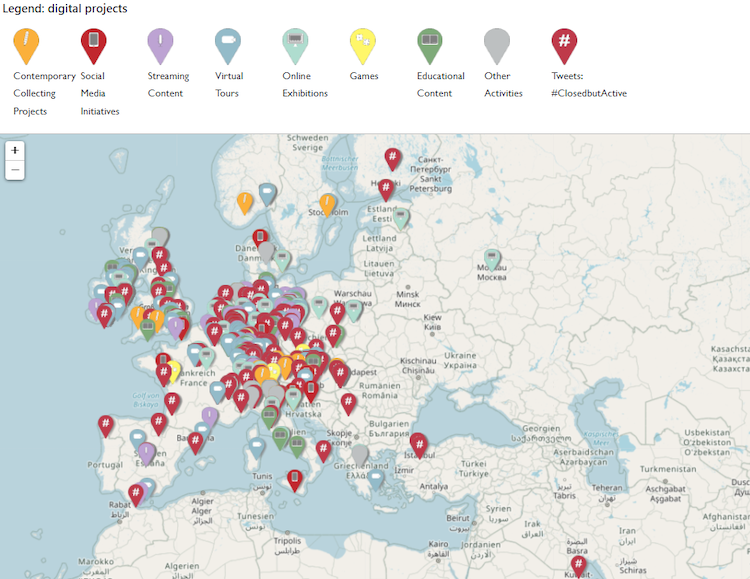1.4. Social networks for GLAMs during the pandemic
In April 2020, when almost all museums around the world were closed due to the COVID-19 pandemic, the International Council of Museums (ICOM) ran a survey on cultural institutions in order to better respond to the emergency and the difficulties arisen in its network (ICOM, 2020). According to this survey, 94,7% of the museums that participated in it were closed.
During the lockdown, many museums reconsidered and revalued their digital activities. Although it was shown that half of the museums that were part of the survey had already a presence on social media, digital communication activities have been augmented in at least 15% of the cases. Cultural institutions used their social networks in order to engage with the audience, by using mainstream digital tools (email, website) and social networking tools. Therefore, social media activities saw an outstanding increase in numbers in more than half of the museums surveyed.
Under the pandemic circumstances, UNESCO also launched a study to evaluate the impact of COVID-19 on museums and cultural institutions (UNESCO, 2020).
In this study, Unesco appraised museums’ initiatives around the world. Some of the digital activities developed during museum closures were:
- The use of previously digitised resources
- Digitisation of planned activities during the months of lockdown
- Increased activity on social media
- Special activities created for lockdown
- Professional and scientific activities organised in the context of lockdown
Click here to find out more about the UNESCO report.
Families and especially young people benefited the most from the situation, as they represent the part of the population that is most active online, interacting through an average number of 4-5 digital platforms (such as Twitter, Facebook, TikTok, and Instagram) on a day-to-day basis.
We will now have a quick look at practices and actions organized remotely by cultural organizations (GLAMs) aiming to ensure interactive and creative activities for everyone during the pandemic.
In this context, Europeana, a distinguished institution that empowers the cultural heritage sector in its digital transformation, showcased a variety of cultural initiatives during the pandemic. All of them were carried out through digital media channels and especially, social media in order to facilitate access to the institutions’ cultural content and forge youth engagement in their activities.
Museums have primarily based their actions on their existing resources, like online collection portals and social media accounts and focused on creating new content, such as virtual exhibitions and virtual tours of their galleries via streaming platforms or realising digital educational material for children and adults.
Follow Europeana’s collection of initiatives to get inspired by ways cultural heritage organisations engage audiences with their collections in times of pandemic and mobility restrictions.

Additional action was proposed by NEMO, the Network of European Museum Organisations. NEMO organised a webinar that guided the participants in the search for meaning during the pandemic, exploring the role and relevance of museums under these challenging times.

In this NEMO Webinar, Ece Özdil, founder of Jüniör, shared eight museum trends and related design methods to redefine how to deal with the digital audience and physical and digital (phygital) context that shape museums’ actions in the short-,mid- and long- term period (24:20 - 45:22 for the eight trends).
Find more info about the NEMO network, its practices and the impact of the Covid-19 on GLAMs in Europe following the links:
NEMO Webinar on the next museum trends. Ece Özdil, founder of Jüniör, deals with the role of museums during the pandemic crisis and tries to shape a diverse future for these cultural institutions.
Survey on the impact of the COVID-19 pandemic on museums in Europe The report comprises nearly 1,000 survey responses collected between 24 March and 30 April 2020 from museums in 48 countries, mainly from Europe. The survey findings focus on: economic support for museum operations; investment in digital cultural heritage; and making museums fit for crises.
Follow-up Survey on the impact of the COVID-19 pandemic on museums in Europe. This survey was answered by 600 museums from 48 countries between 30 October and 29 November 2020, the majority coming from Europe. The themes addressed are: Consequences of income (and other) losses; The increased importance of digital museum offers; Adapted operations and preparedness during and for crises.
Museums in 2020+. The search for meaning. This text reports eight trends that will guide museums in 2020 and beyond, to help museum-leaders, workers and enthusiasts, make mindful decisions, thinking about a new kind of audience and context where they can inform both their short-, mid- and long-term actions for their museum.
Finally, another way to collect GLAM initiatives designed to increase audience participation remotely is, among others, this map designed by Chiara Zuanni, University of Graz. The map brings together digital initiatives organised by museums during the pandemic.
